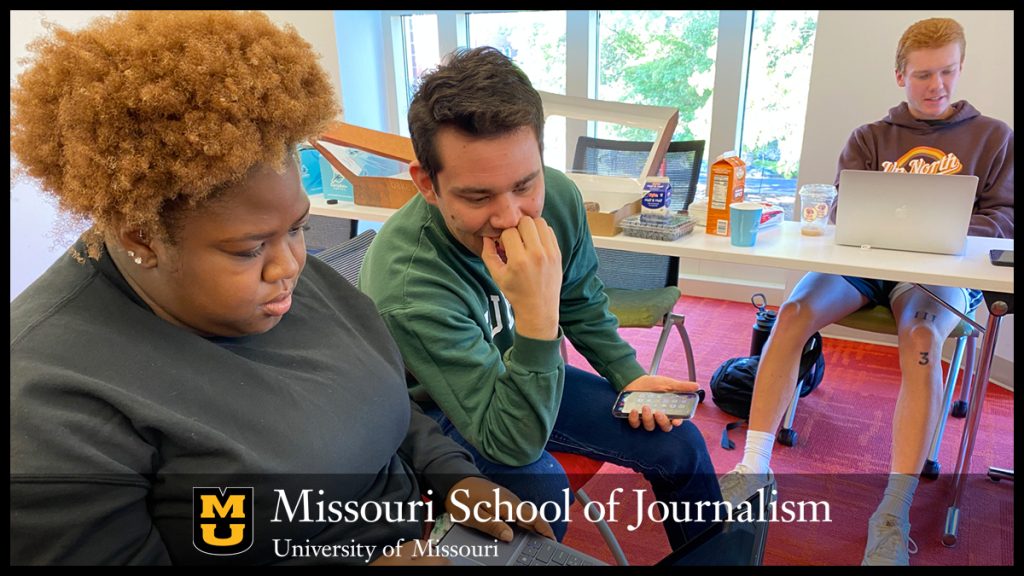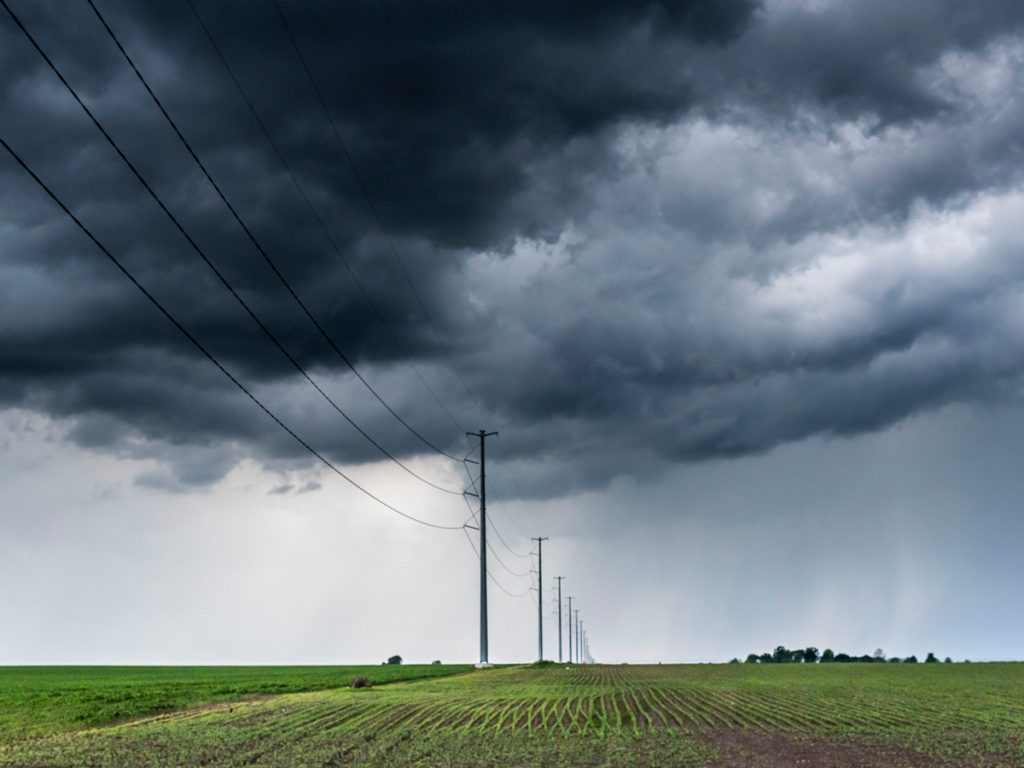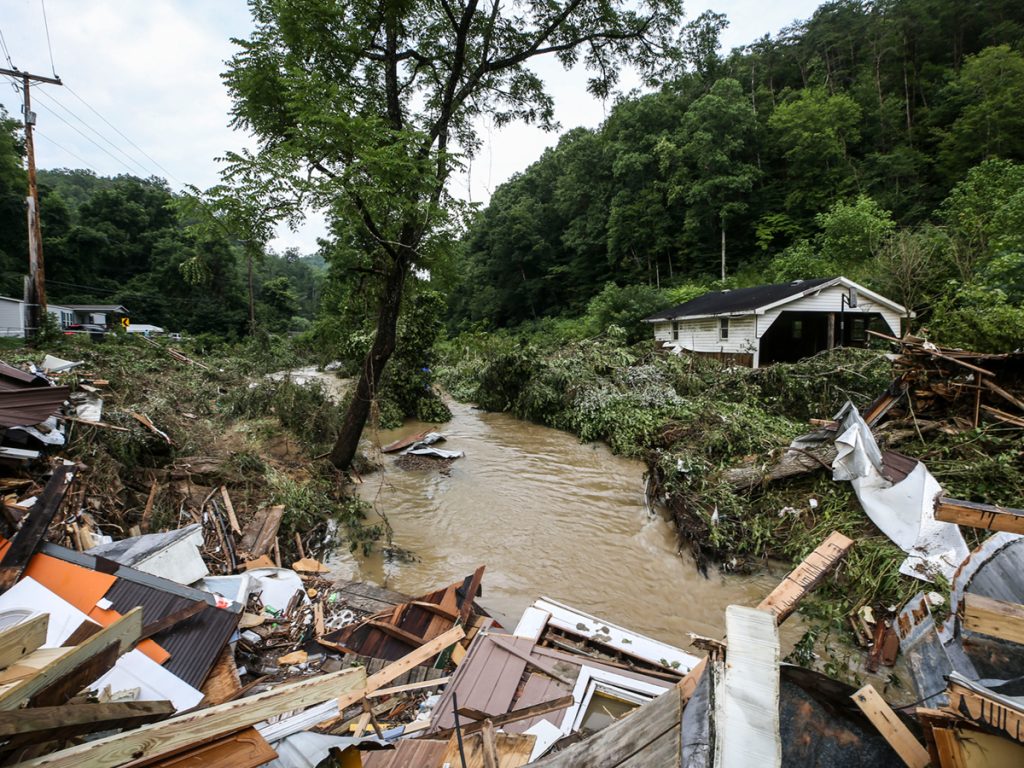Ag & Water Desk launches first collaborative project, ‘When It Rains’

Missouri School of Journalism students Mikayla Higgins and Adam Goldstein edit an interview with a St. Louis resident who experienced flooding to create a social media post as part of the ‘When It Rains’ series.
After floods hammered St. Louis and eastern Kentucky this summer, the Mississippi River Basin Ag & Water Desk wanted to know: Is rainfall increasing in the basin? Desk Editorial Director Tegan Wendland worked with the nonprofit climate research and communication group Climate Central to produce new data analyses on this question. We found that average annual rainfall has increased by upwards of 8 inches in the past 50 years in much of the region while also falling in heavier bouts, causing repeated flooding and raising many questions about how we live in a wetter world.
Those facts are part of When it Rains, a new five-part multimedia series from the Mississippi River Basin Ag & Water Desk available for publication Oct. 10. The Desk is an independent reporting network based at the University of Missouri School of Journalism, in partnership with Report For America and the Society of Environmental Journalists, funded by the Walton Family Foundation.

This intensely collaborative project involved editors and reporters across 14 of the Desk’s partner news outlets. Our team talked with experts, regulators, advocates and residents about how this change is affecting the region and what people are doing about it. Reporters scaled levees in Atchison, Mo., interviewed elders in Freeport, Ill., toured newly-relocated communities on the Kickapoo River in Wisconsin, talked with farmers in rural Minnesota and interviewed tribal members in Indiana. We crunched data and sourced archival imagery from the National Weather Service and the National Oceanic and Atmospheric Administration. The Desk also worked with journalism students at the Mizzou J-School to gather community input through an online survey, which further shaped the series.
“When it Rains is the kind of impactful environmental coverage that makes the Desk’s network of dedicated news gatherers such an asset to journalism in this important region,” said David Kurpius, dean of the Missouri School of Journalism. “The community participation involved in the series, along with its multistate scale, innate educational value and free accessibility for news outlets, highlights the Desk’s emphasis on coverage that is useful to readers and the industry alike.”
Stories in the package include:
- The Mississippi River basin is getting wetter as climate change brings era of extremes
- To stay or to go: Increased flooding forces towns to make hard choices
- A wetter world is changing farm country. Can growers adapt?
- Making room for the river: Communities look at nature-based solutions
- Sidebars: Your questions answered; How we reported this series
- Radio version
“I’m proud that every outlet on our team contributed in some way — reporting, writing, editing, visuals, outreach, and more,” said Sara Shipley Hiles, executive director of the Desk. “These stories are meeting our goal of covering the basin as an ecosystem, flying at that 40,000-foot height and analyzing how these trends play out across the region. This is how we see the bigger picture and help people connect the dots.”

Each story was co-written by at least two reporters and went through multiple reviews by editors and fact-checkers from the Desk and partner outlets. Reporters and photographers from Desk partners contributed photos, supplemented by archival images from public sources. Desk Assistant Editor Annie Ropeik assembled all the work and shared it with the Desk’s distribution network, which stands at 36 outlets in 14 states with a total audience of 45 million people.
Interested news outlets are welcome to sign up to receive access to these and other stories for free. Members of the public can receive a newsletter with our latest stories twice a month.
Credits for the package include:
Reporting by Connor Giffin (The Courier-Journal), Keely Brewer (Daily Memphian), Erin Jordan and Brittney J. Miller (The Gazette), Eva Tesfaye (Harvest Public Media), Sarah Bowman (Indianapolis Star), Joshua Rosenberg (The Lens), Madeline Heim (Milwaukee Journal Sentinel), Bryce Gray (St. Louis Post-Dispatch), Chloe Johnson (Star Tribune), Juanpablo Ramirez-Franco (WNIJ-Northern Public Radio) and Halle Parker (WWNO-New Orleans Public Radio).
Editing by Tegan Wendland (Ag & Water Desk) and Georgina Gustin (Inside Climate News). Additional editing by Sara Shipley Hiles and Annie Ropeik (Ag & Water Desk), Maria Altman (Harvest Public Media), Sky Chadde (Investigate Midwest), Sarah Gassen (St. Louis Post-Dispatch), James Shiffer (Star Tribune) and Jim Malewitz (Wisconsin Watch), with special thanks to Jen Brady (Climate Central), Chris Clayton (DTN/The Progressive Farmer) and Mark Schleifstein (The Times-Picayune/The New Orleans Advocate).
Data visualization by Teghan Simonton (University of Missouri School of Journalism) with help from Chase Davis (Star Tribune).
Photography by Jeff Faughender and Matt Stone (The Courier-Journal), Liz Martin and Jim Slosiarek (The Gazette), Robert Scheer (Indianapolis Star), Darrell Hoemann (Investigate Midwest), Mark Hoffman (Milwaukee Journal Sentinel) and Brian Peterson (Star Tribune).
Audience engagement by Adam Goldstein, Mikayla Higgins, Reade Snelling and Shirin Rekabdar-Xavier (University of Missouri School of Journalism).
Updated: October 10, 2022